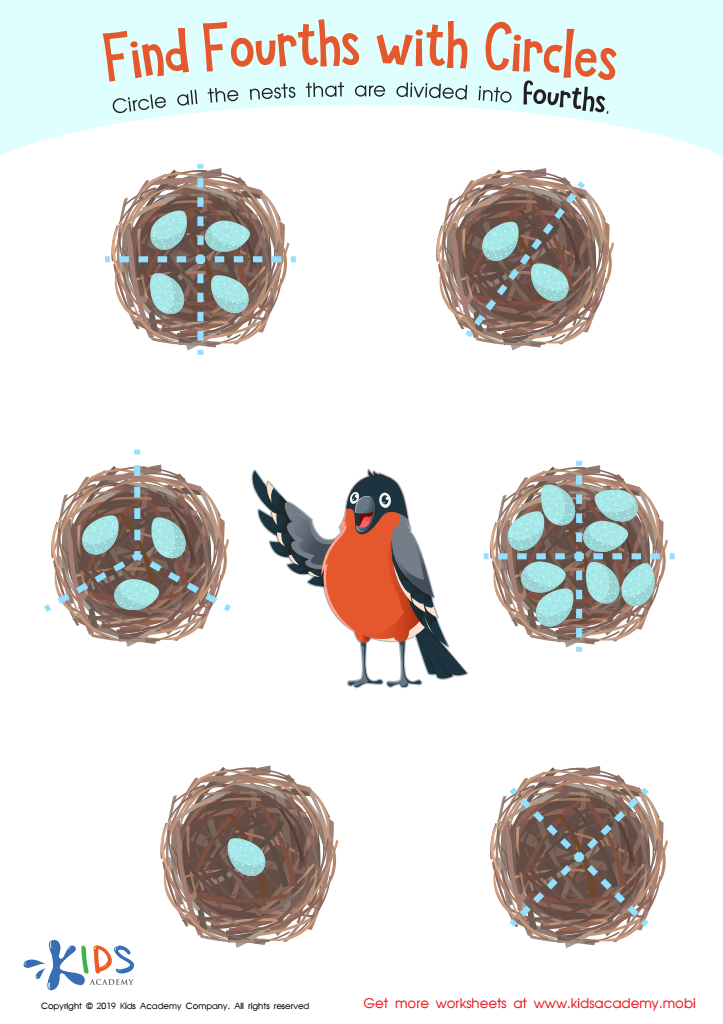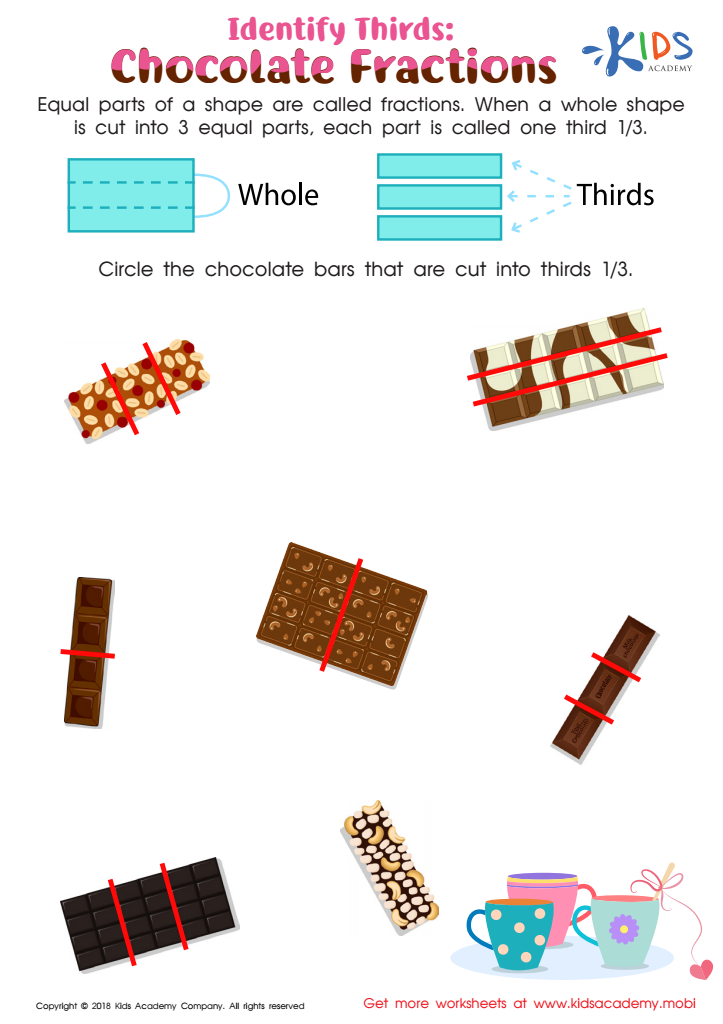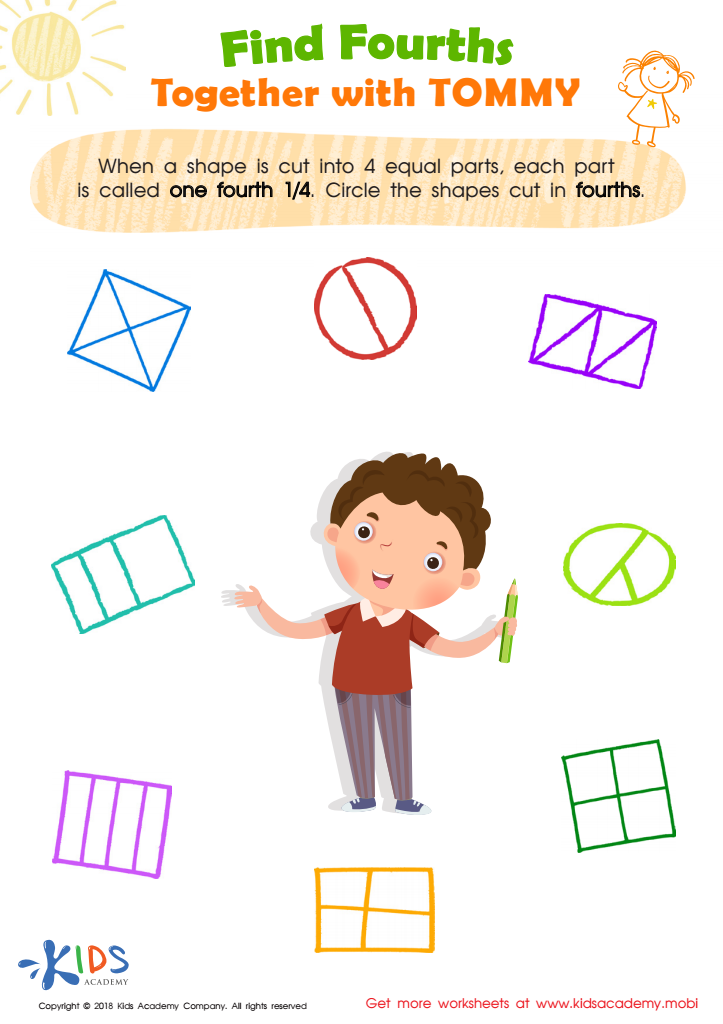Visual representation comprehension Geometry Worksheets for Ages 5-8
3 filtered results
-
From - To
Discover fun and engaging Visual Representation Comprehension Geometry Worksheets, designed for children ages 5-8! These worksheets help young learners master foundational geometry skills through interactive visual activities. With vibrant images and playful tasks, kids can easily grasp concepts such as shapes, patterns, spatial awareness, and symmetry. Perfect for home or classroom use, these worksheets foster critical thinking and problem-solving abilities while keeping students entertained. Ideal for parents, homeschoolers, or teachers looking to support and enrich maths education. Help your child explore the exciting world of geometry with our expertly crafted, printable worksheets, available at Kids Academy!


Find Fourths Circles Worksheet


Identify Thirds: Chocolate Fractions Worksheet


Find Fourths Together with Tommy Worksheet
Visual representation comprehension in geometry is essential for young learners aged 5-8 as it significantly enhances their cognitive development and problem-solving skills. Understanding geometric shapes and their attributes helps children develop spatial awareness, which is the ability to understand and interact with the spatial aspect of their environment. This skill is foundational for grasping more complex concepts in mathematics, science, and even daily activities like navigating spaces or assembling puzzles.
Young children are naturally visual learners, and engaging them with shapes, patterns, and spatial concepts caters to this learning style, making abstract concepts more concrete and comprehensible. For example, recognizing and comparing different shapes not only fosters critical thinking but also aids in the development of vocabulary and language as children describe similarities, differences, and positions of objects.
Moreover, early exposure to geometry skills prepares children for future academic success. Studies show that proficiency in early math skills, including geometry, strongly predicts later achievement in mathematics and engagement in STEM (Science, Technology, Engineering, and Mathematics) fields.
Parents and teachers emphasizing visual representation comprehension in geometry can create a playful and interactive learning environment. This encourages exploration, curiosity, and a positive attitude towards mathematics from an early age, laying a robust foundation for long-term educational growth and a lifelong appreciation of learning.

 Assign to My Students
Assign to My Students
















